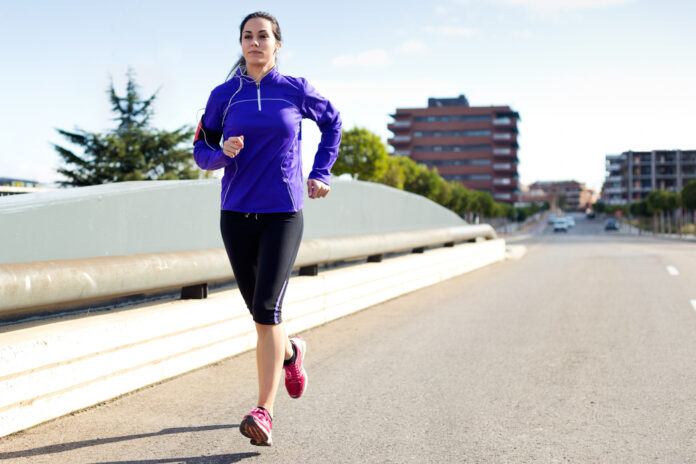Annie, an online content creator, showcases her impressive transformation after walking 20,000 steps daily for 30 days
Annie, known on social media as @fitannie, has captured the attention of her followers with her inspiring weight loss journey centred around walking. Over the course of just one month, Annie committed herself to walking 20,000 steps every day, documenting her progress on platforms like TikTok. In a recent video, she revealed stunning before-and-after images, showcasing a visibly slimmer physique and significant changes in her overall body composition.
Starting her journey with a commitment to physical fitness, Annie shared how initially sceptical she was about achieving noticeable results in just 30 days. However, her dedication paid off as she not only shed around 4kg but also noticed muscle gain from her rigorous walking routine. Annie emphasized that while the process was challenging, especially maintaining such a high step count daily, the tangible results affirmed the effectiveness of her approach.
Embed from Getty ImagesBeyond physical transformations, Annie’s story resonates deeply in the realm of personal health journeys shared online. Her transparency about the highs and lows of her fitness regimen has garnered widespread support and engagement from her social media community. Followers praised her determination and found motivation in her success, sparking conversations about the benefits of walking and sustainable weight loss strategies.
Analysis:
Political Perspective: Annie’s journey intersects with political discussions surrounding public health policies aimed at combating obesity. Governments worldwide advocate for initiatives promoting physical activity to improve population health. Annie’s success highlights the potential impact of grassroots health movements and social media influencers in promoting healthier lifestyles. Policymakers could leverage such narratives to bolster campaigns that encourage regular exercise and combat sedentary behaviours.
Social Perspective: Socially, Annie’s transformation underscores societal pressures and norms regarding body image and fitness. Her journey challenges conventional beauty standards by emphasizing health and self-care over unrealistic ideals. Moreover, her open dialogue about the mental and emotional aspects of her journey encourages discussions on body positivity and self-acceptance within online communities. Annie’s story resonates with individuals seeking realistic fitness inspirations and fosters a supportive online environment for health-conscious behaviours.
Racial Perspective: From a racial standpoint, Annie’s story illustrates broader disparities in access to health resources and fitness opportunities. Discussions about obesity and fitness often intersect with socioeconomic factors that disproportionately affect marginalized communities. Addressing these disparities requires inclusive health policies that ensure equitable access to fitness facilities, safe walking paths, and nutrition education. Annie’s journey prompts conversations on how racial inequalities impact health outcomes and access to wellness initiatives.
Gender Perspective: Gender dynamics play a role in discussions about body image and fitness expectations. Annie’s narrative challenges stereotypes about women’s bodies and fitness capabilities, demonstrating the empowerment that comes from achieving personal health goals. Her journey encourages women to prioritize physical well-being and redefine societal norms around beauty and fitness. Annie’s success serves as a reminder of the diverse ways women navigate health challenges and redefine success in their fitness journeys.
Economic Perspective: Economically, Annie’s experience highlights the cost-effectiveness of walking as a form of exercise accessible to diverse socioeconomic backgrounds. Unlike expensive gym memberships or specialized equipment, walking requires minimal financial investment, making it a viable option for individuals seeking affordable fitness solutions. Employers and policymakers could explore workplace wellness programs that promote walking breaks or subsidize fitness resources to enhance workforce health and productivity. Annie’s story underscores the economic benefits of promoting physical activity as a preventive health measure.
